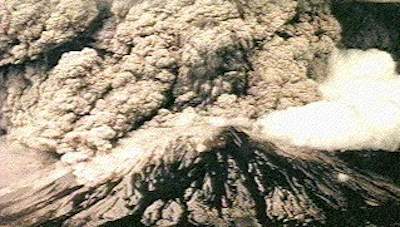
The Worlds Volcanic Past and Future
By Alan Caruba Thursday, February 20, 2014
.While Americans coped with massive snowfalls in the South, Midwest and Northeast, a dramatic volcanic eruption occurred on February 13th in Indonesia when Mount Kelud in the province of East Java erupted so loudly it could be heard 120 miles away.
It is one of 130 volcanos in the worlds fourth most populous nation, located on the ring of fire volcanic belt around the shores of the Pacific Ocean. About 200,000 people were affected and more than 76,000 had to be evacuated according to Indonesias National Disaster Mitigation Agency. The affect was dramatic, shutting down an airport in Indonesias second largest city, Surabaya, a major industrial center, along with those in five other cities as well as a major oil refinery that provides more than a third of Indonesias total output of refined products
So, we make big noises about Manmade Global Climate Change and totally ignore the billions of tons of gas and ash spewed into the atmosphere by Ma Nature. Didn't the eruption of one volcano cause a mini Ice Age for a year back in the 1800s? And what about the recent eruption of the volcano in Iceland? Are the politicians now going to come up with some scheme to control volcanic eruptions claiming they are Man's fault?

Read more @ The World?s Volcanic Past and Future

